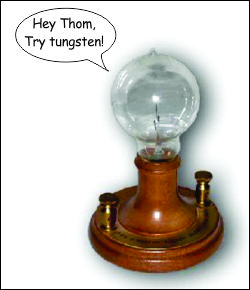 My storytelling students have finished telling their folk tales / fairytales. Now they are moving on to fact-based stories. One of the major differences between these two genres is that unless one is merely following a chronological list of events in a biography or historical story, tellers must give structure to the fact-based story.
My storytelling students have finished telling their folk tales / fairytales. Now they are moving on to fact-based stories. One of the major differences between these two genres is that unless one is merely following a chronological list of events in a biography or historical story, tellers must give structure to the fact-based story.
In a previous tip, I have suggested that telling the story in "first person" from the point of view of another character in the story can be quite creative. In essence, tell Edison's story from the POV of his assistant; tell the story of 911 from the POV of a first responder; tell Ben Franklin's story from the POV of his dog (see post here).
Last week, we were discussing different possibilities in class when one of the students asked a question, "Can we tell from the point of view of an inanimate object?" - Yes! - Brilliant!
I have written before about using significant objects to build a back-story (see post here). With this question, the student is moving to a much higher level of creativity.
Tell Lincoln's story from the point of view of the walls of the oval office. What meetings may have taken place? What conversations may not have been privy to the public? What did Lincoln do in those private moments alone? What stories could the walls tell you?
Tell a war story from the POV of a soldier's rifle. What was it like to go through basic training? How long was it before the soldier went into combat? What was it like the first time the rifle was fired in combat? What happened to the soldier the first time he actually shot at and killed the enemy?
Tell the story of Thomas Edison from the POV of the light bulb - or the tungsten filament that finally worked. "I was the one. After over 1000 different experiments, I was the one that worked. I can tell you about all the problems before he tried me!"
Betsy Ross' needle and thread; Neil Armstrong's space suit; the microphone of the devastated reporter at the Hindenburg tragedy; all of these inanimate objects could tell a very creative story about the people and events involved.
Once again, my students have amazed me. They are starting to think creatively about storytelling. Thinking about the magical possibilities of "what if". Not only are they thinking outside the box, they are thinking about speaking from the point of view of the box. I couldn't ask for more!
